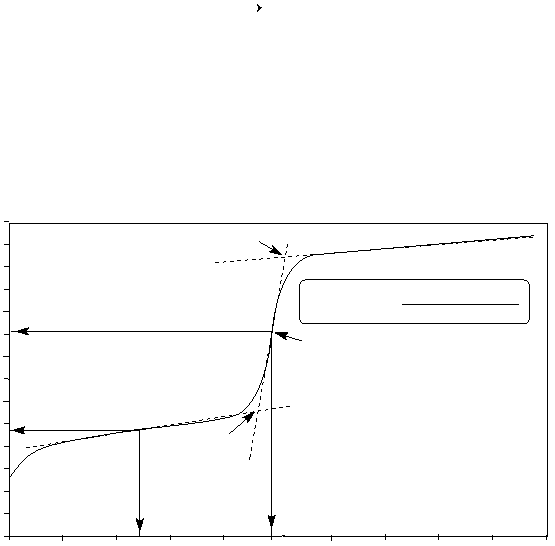
G-3
Hydrochloric acid is a strong acid that dissociates in water completely. Initially, the concentration of hydronium
ion in this solution would be 0.50 M, which is equivalent to a pH of 0.30. The value of pH changes slowly with
the addition of NaOH until near the equivalence point. Further addition of NaOH at that point causes the
values of pH to change sharply, resulting in a sharp change in the slope of the titration curve. To obtain
accurate data correlating pH to the volume of base added, it is important to add the titrant dropwise in this
region..
II. Titration of a Weak Acid with a Strong Base.
A chemical equilibrium exists in solutions of weak acids or weak bases. Consider the dissociation of a weak
acid, HA, given below:
HA
(aq)
+ H2O
(l)
H3O
+
(aq)
+ A
-
(aq)
(3)
The base A
-
, formed by reaction of HA with water, is called the conjugate base of HA (the acid HA is the
conjugate acid of A
-
)
. The pair, HA and A
-
, are called a conjugate acid-base pair. Titrating a 0.50 M
solution of HA with a strong base like sodium hydroxide, and plotting the measured pH against volume of base
added, might give a graph like that shown in Figure 2.
Figure 2
pH at C + pH at D
2
=
pH at Eq. Pt
0
2
4
6
8
10
12
14
pH
0
10
20
30
40
50
Volume of NaOH added (mL)
Titration of HA using 0.50 M NaOH
C
D
Eq. Pt.
pH = 9.06
Eq. Pt.
Eq. vol. = 25.0 mL
pH = pK
a
= 4.72
1/2 Eq. vol.
